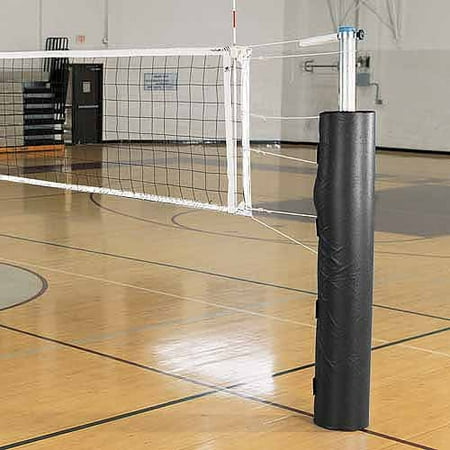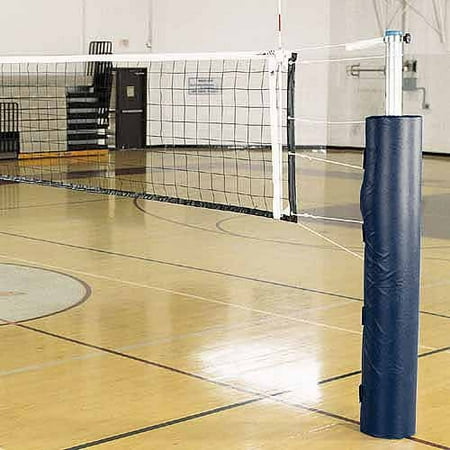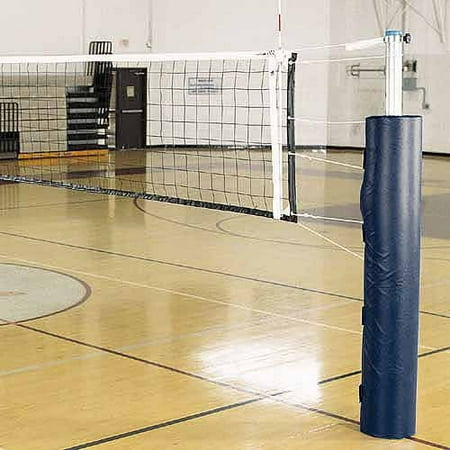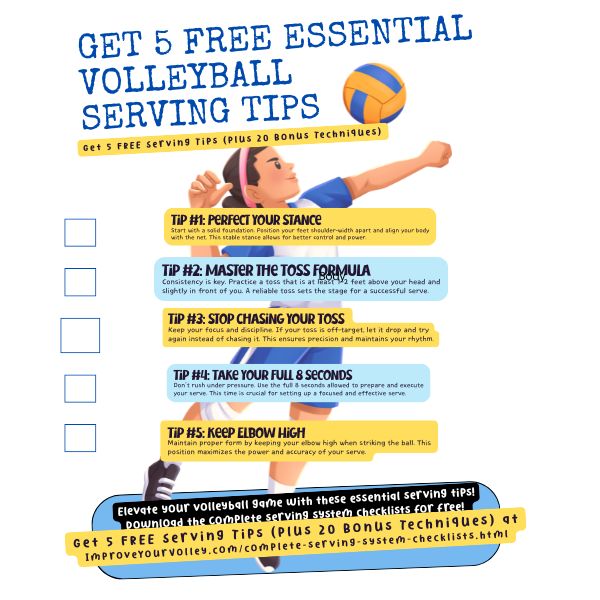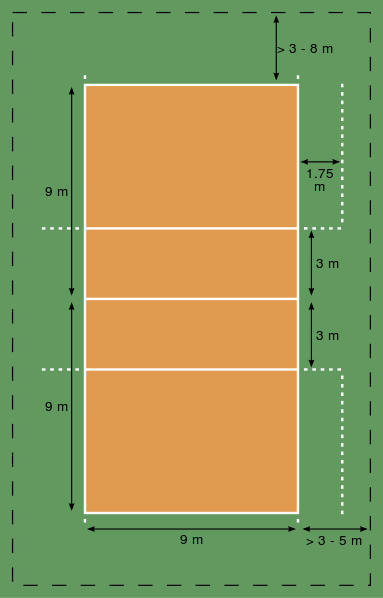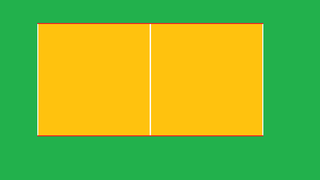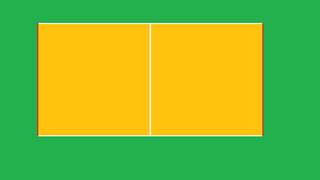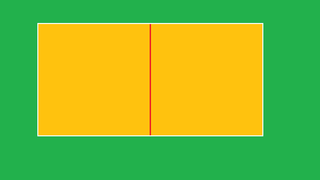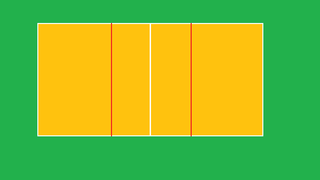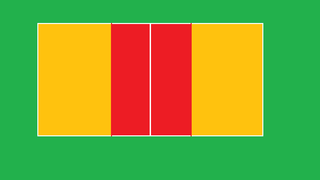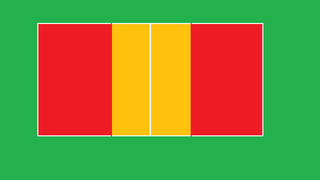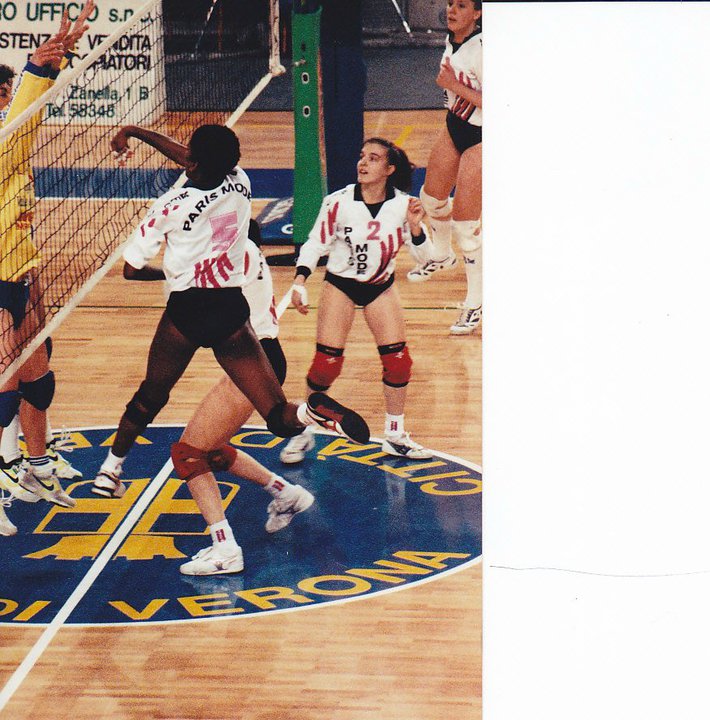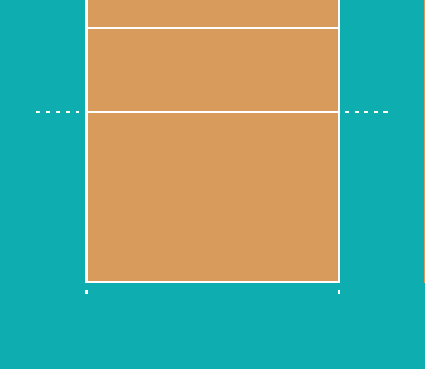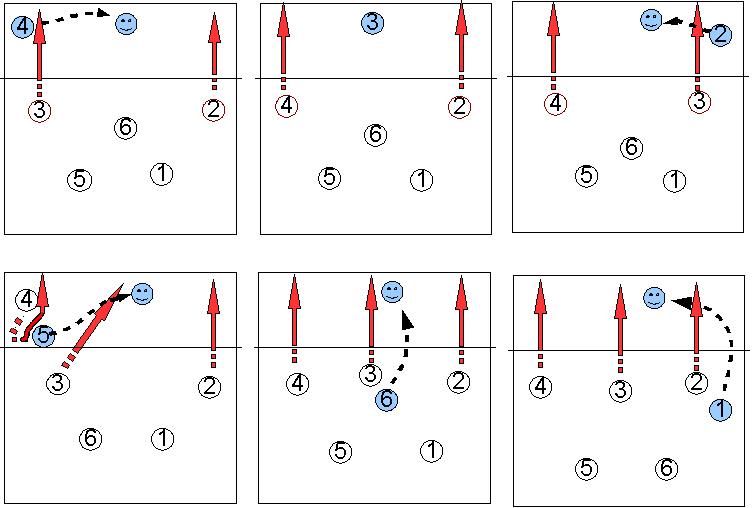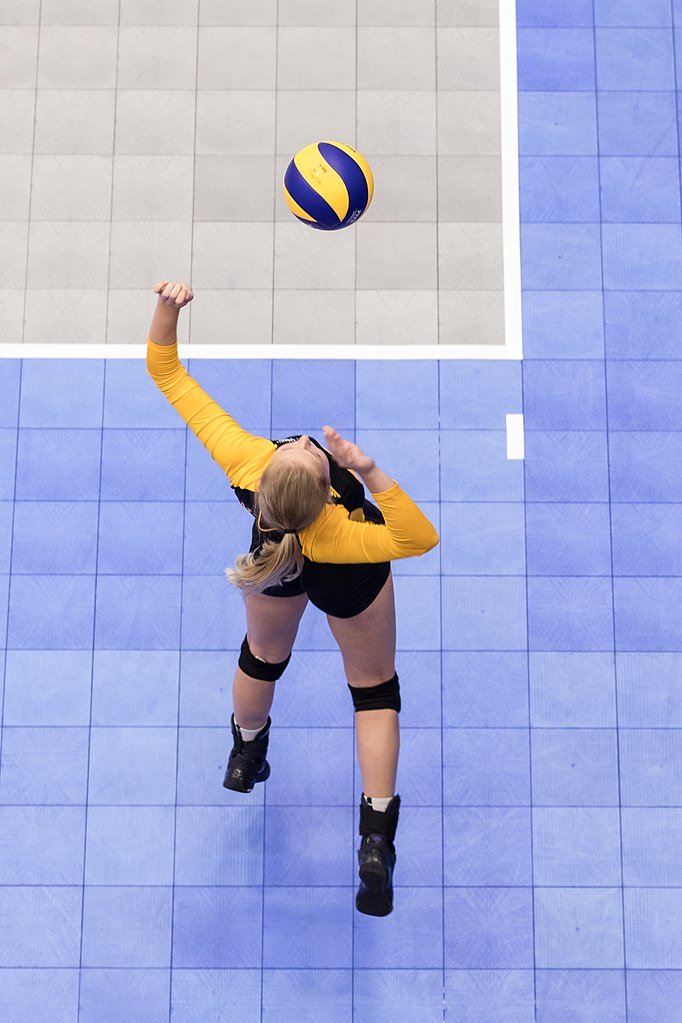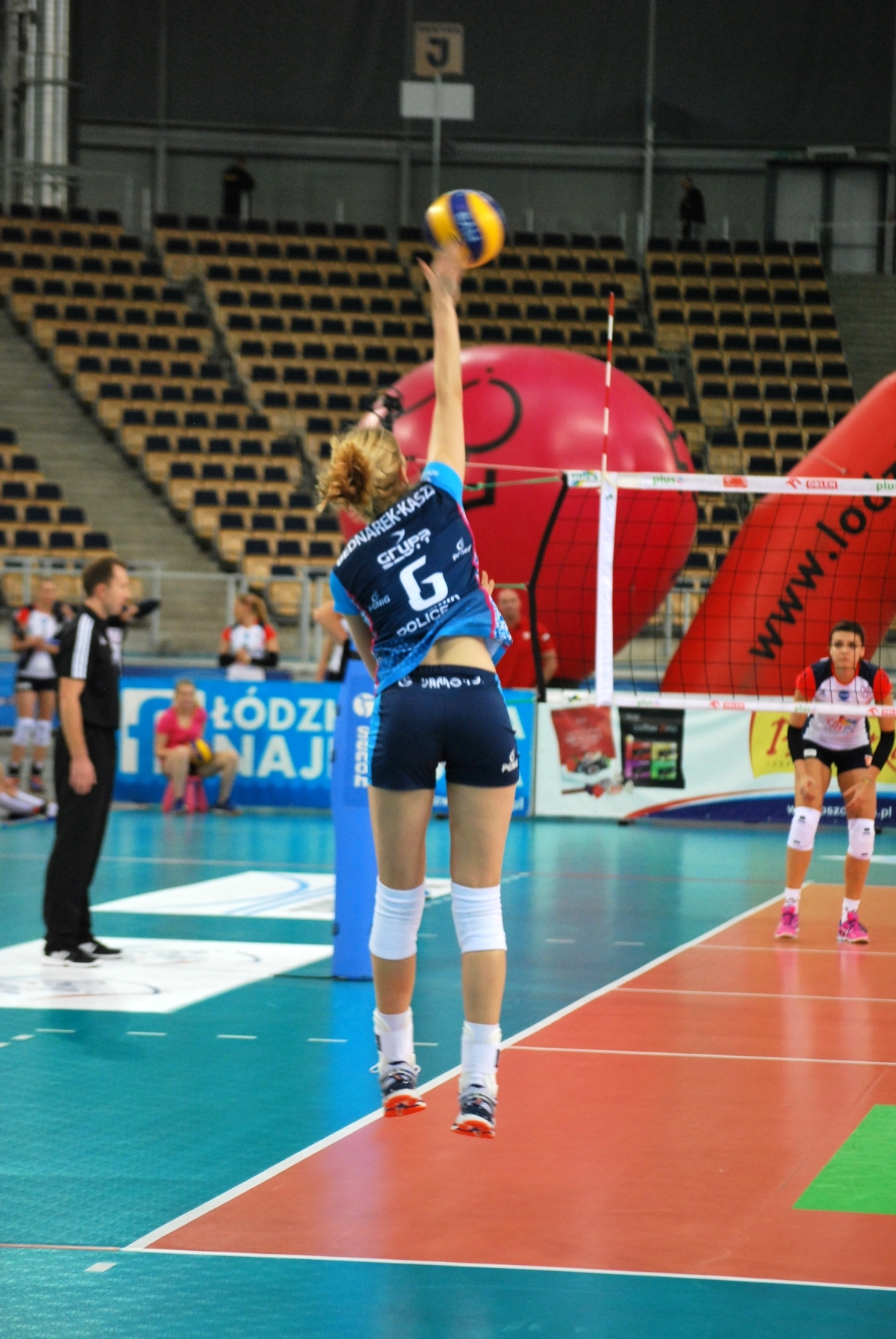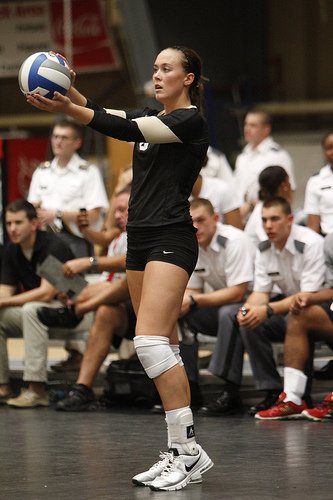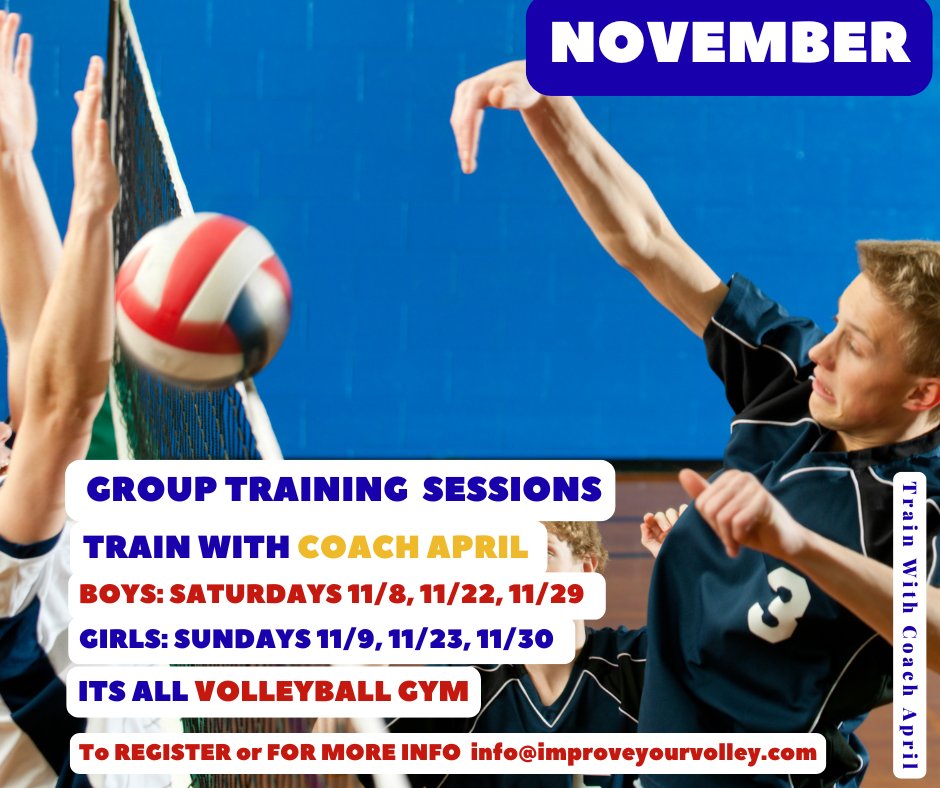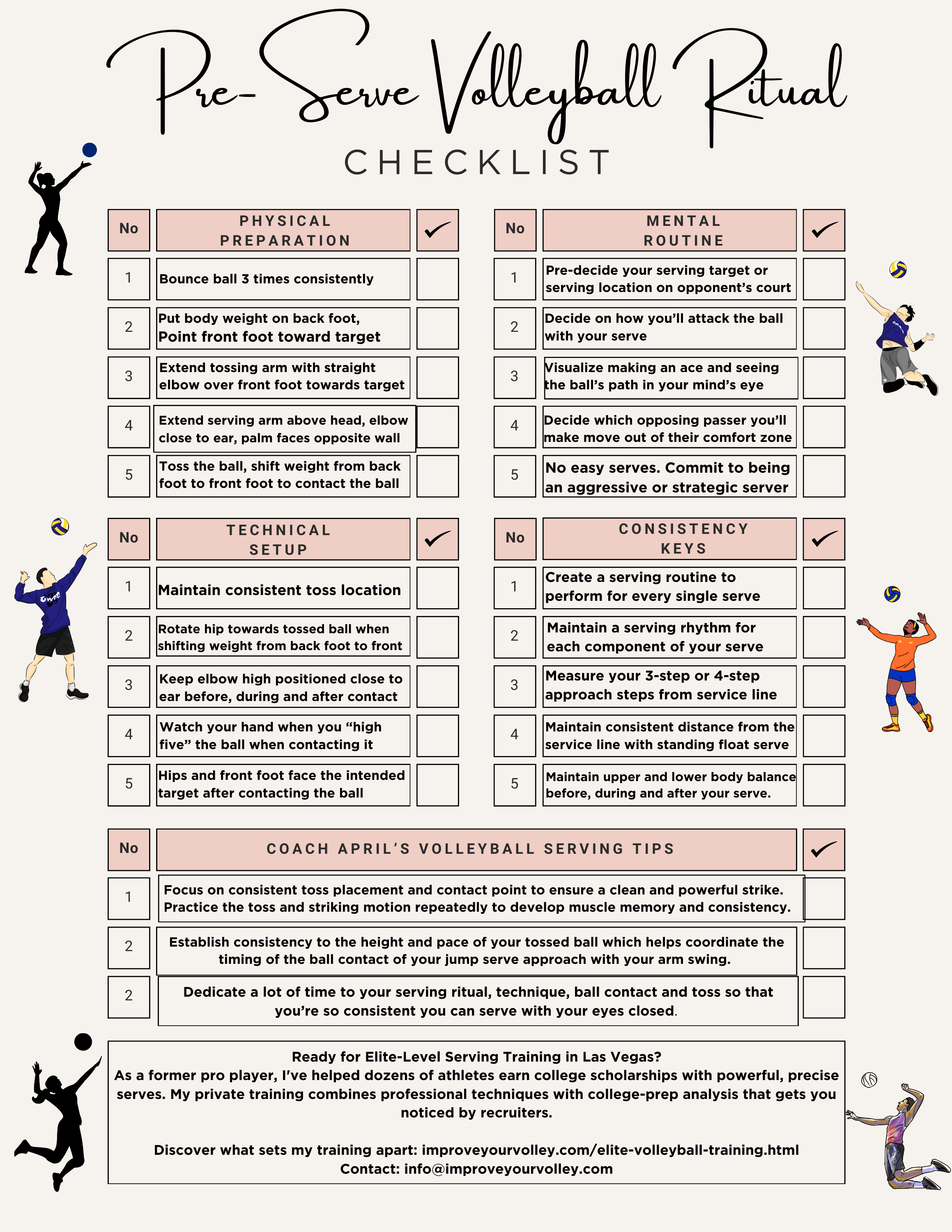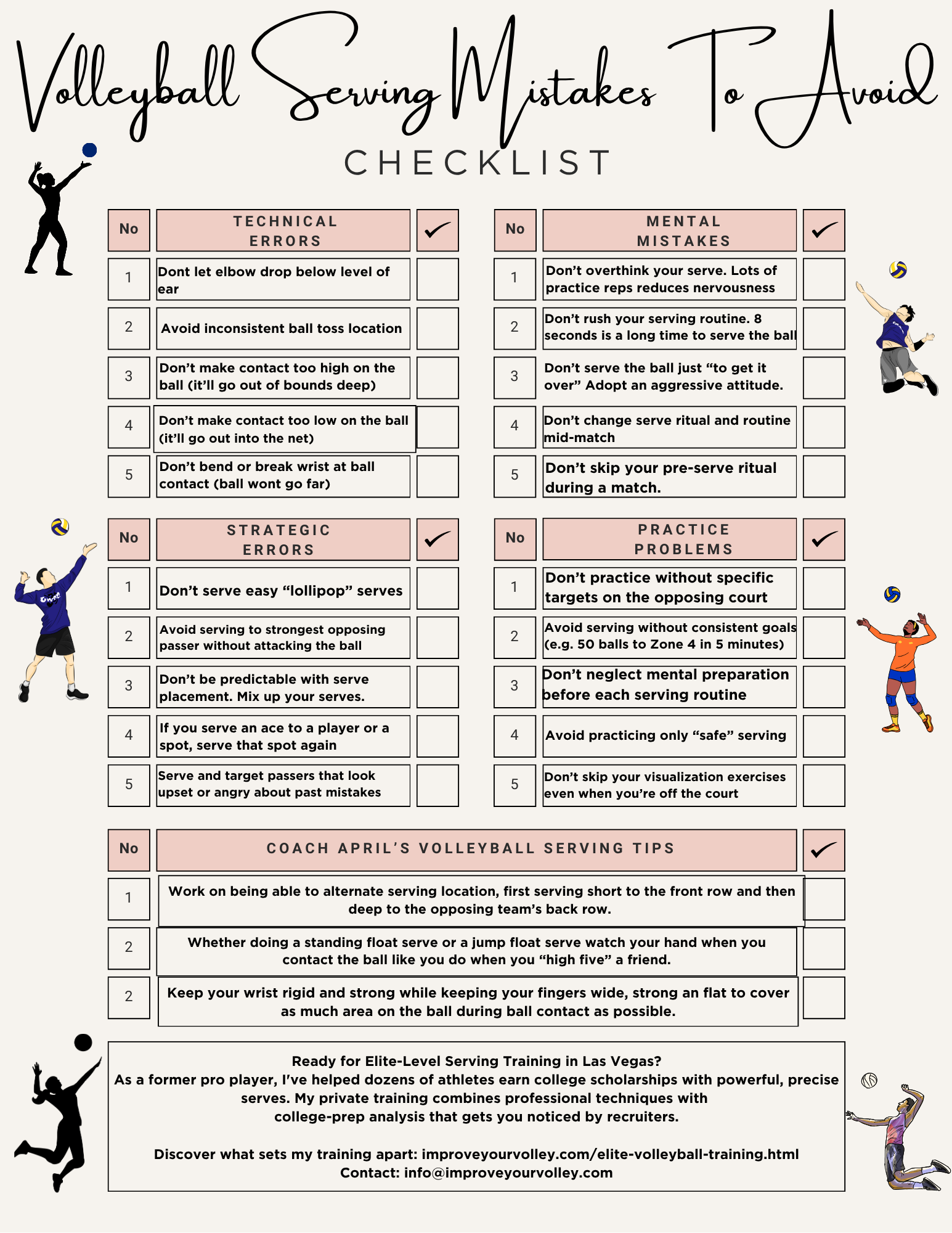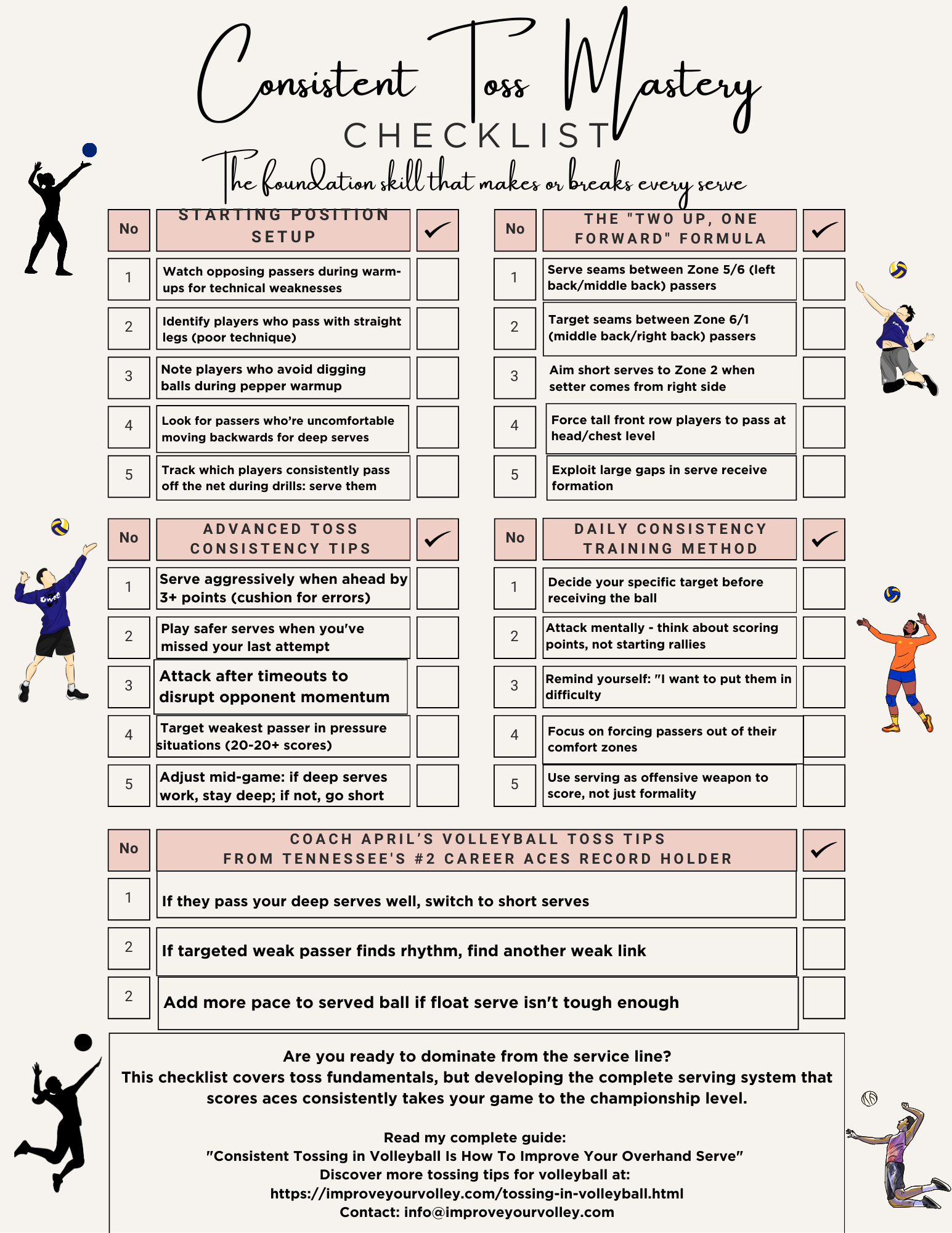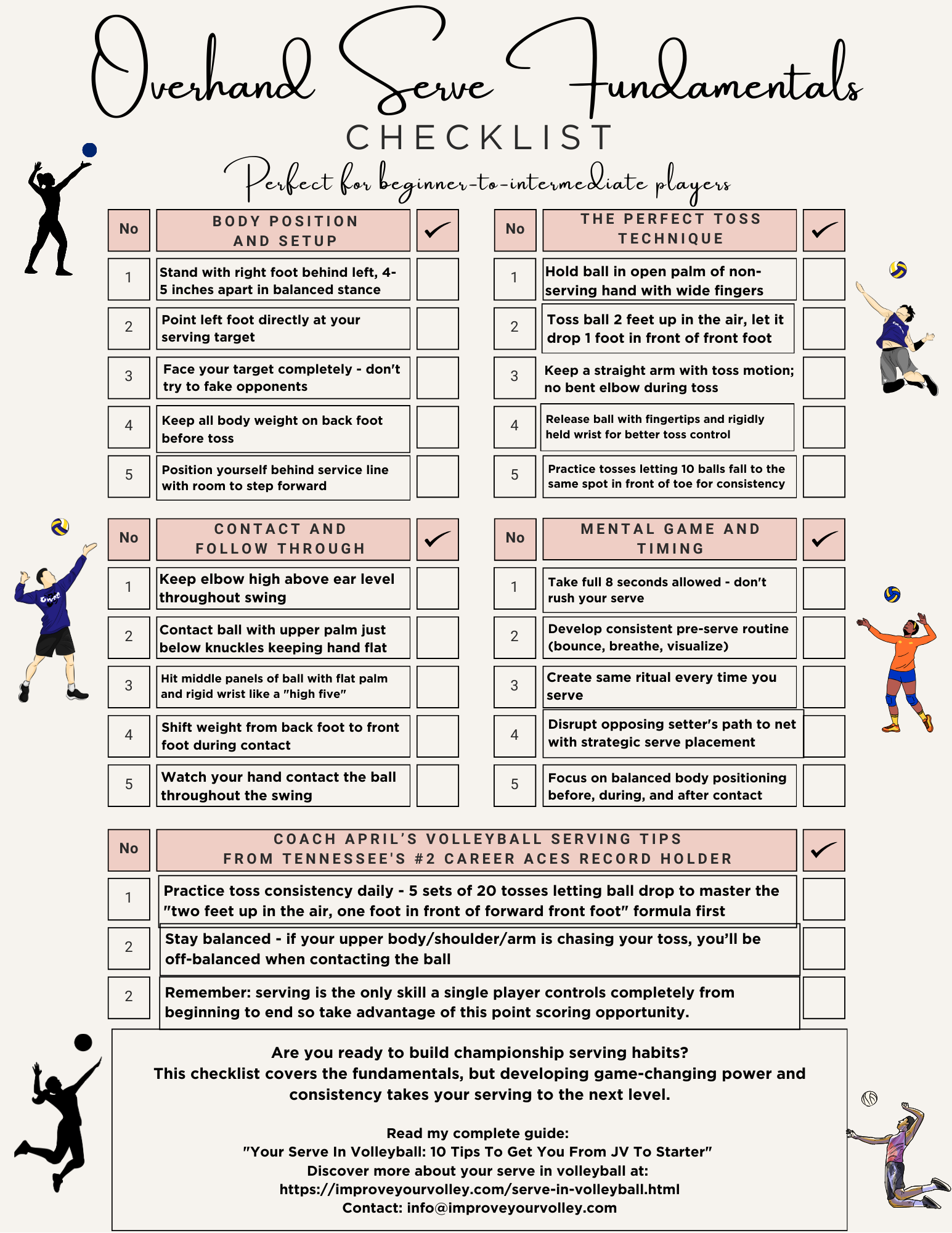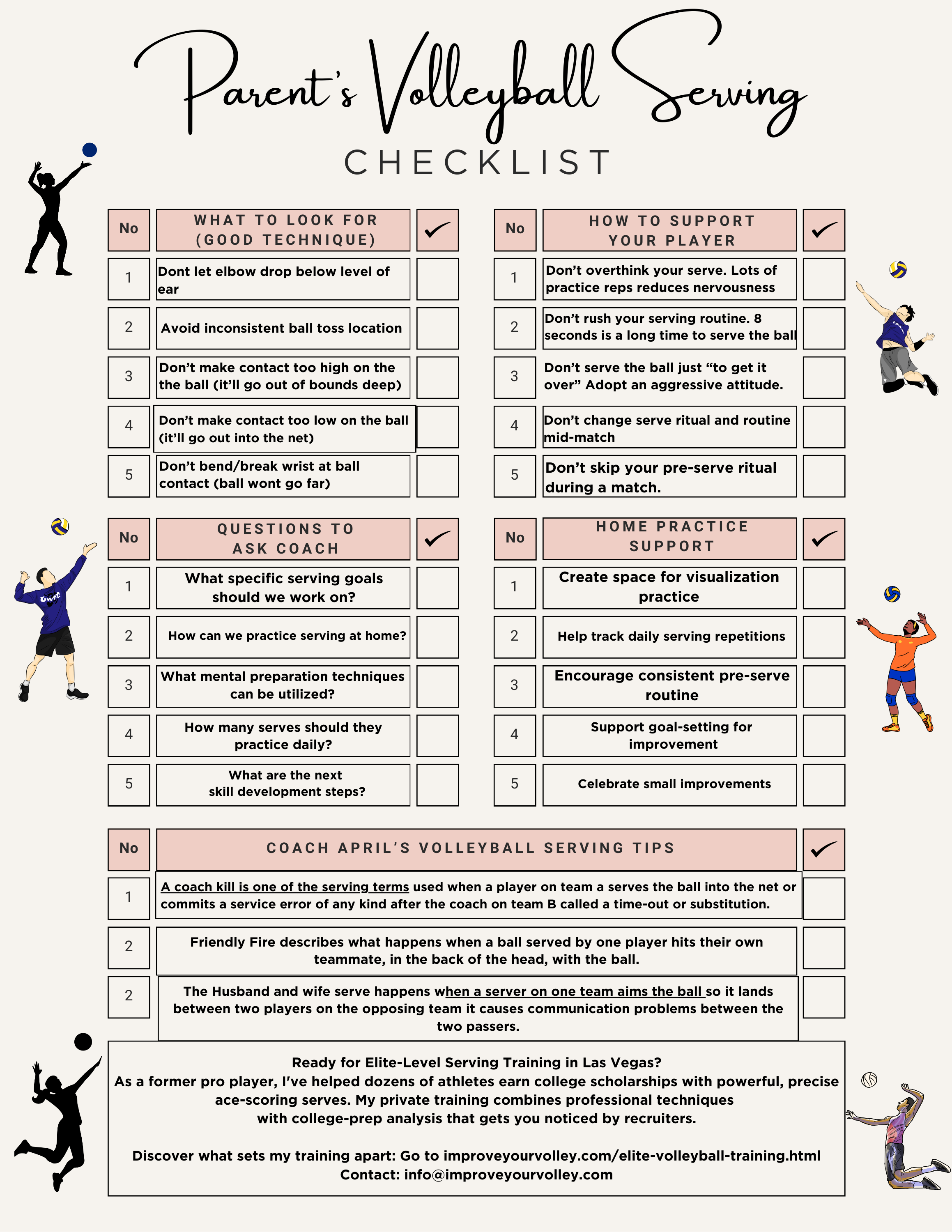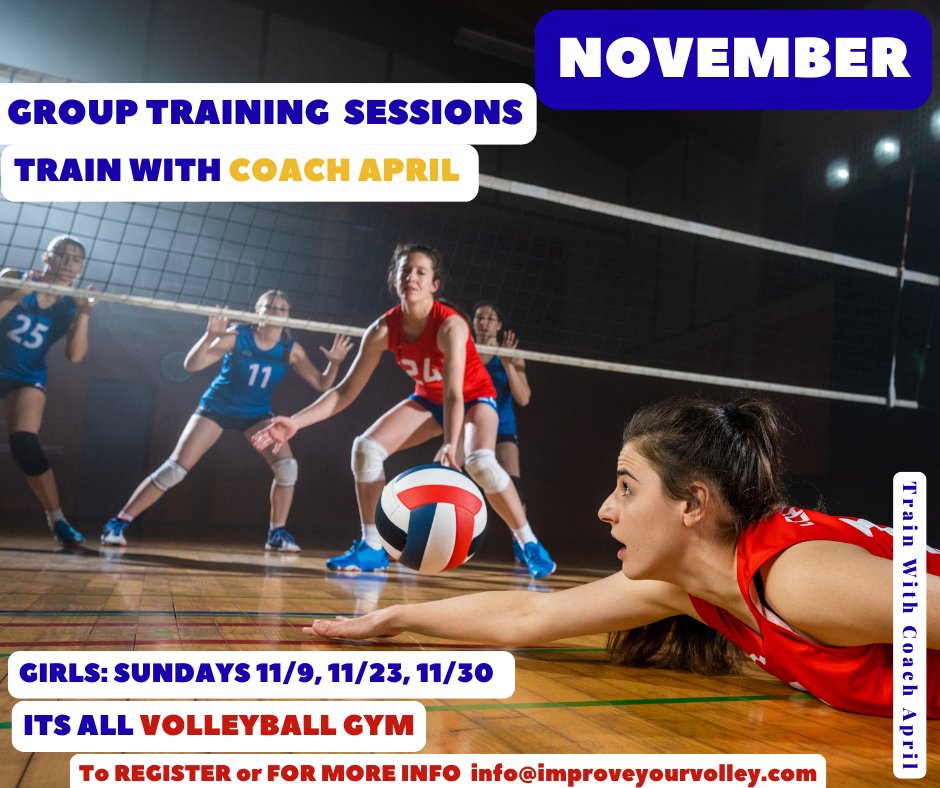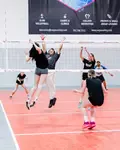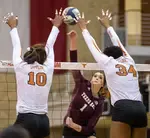- Improve Your Volleyball with Coach April
- Whats the Volleyball Court Size?
- Volleyball Court Lines
Volleyball Court Lines Create The Boundaries That Outline The Court
Volleyball court lines mark the layout of the boundaries on the official volleyball playing surface showing the play area where two teams can compete legally.
Setting up your own practice space?
These portable volleyball court boundary lines make it easy to practice anywhere.
The volleyball court lines include four sidelines, two endlines, two attack lines and a centerline which outline and mark the boundaries of volleyball court playing area.
- The playing area for a court is in the shape of a large rectangle that measures 30 feet by 60 feet.
- The longest lines are the sidelines and the shortest lines of the rectangle are the endlines
- The centerline runs across the middle of the court and connects the two sidelines. It divides the large rectangle into two equal sized half courts measuring 30 feet by 30 feet.
Need to mark your court for backyard training? I recommend this volleyball court line tape for durability.
- On each court half, there's a ten foot line which divides the half court into thirds.
- The front third of the court is called the front zone.
- It runs from the centerline to the ten foot line and is the line that front row players stay in front of when they are performing their blocking defensive skills in volleyball when their team is on defense.
- The two-thirds of the court which run from the ten foot line to the endline is called the backcourt and is where the backrow players stay when playing in defense.
If during a rally, you attack hit a ball that goes into the opposing team's court and the ball hits any part of the boundary line (sideline, endline)...that ball is considered "In" the court.
Point for your team. Serve for your team.
What Are Attack Lines?
The attack lines, also known as the three-meter lines, play a crucial role in volleyball.
Positioned approximately ten feet or three meters from the net on either side, the attack lines indicate the area where players can perform powerful attack hits or spikes.
These lines serve multiple purposes on the volleyball court.
Firstly, the attack lines act as a boundary that separates the front row players from the back row players.
In volleyball, specific rules govern the actions that players can take based on their position on the court.
Moreover, the attack lines serve as a reference point for players to determine the legality of their attack hits.
If a player makes contact with the ball while in front of or on the attack line, it is considered a violation, leading to a point or serve for the opposing team.
The attack lines help maintain fairness by ensuring that attackers do not gain an unfair advantage by attacking the ball from closer to the net.
In addition, the attack lines are crucial for referees and officials in making accurate calls during the game.
Overall, the attack lines provide a visual and physical marker on the court, creating a designated zone where players can execute powerful spikes.
They not only separate the front row and back row players but also help maintain fairness and consistency in the execution of attack hits.
What Is The Service Line?
Located approximately 10 feet or 3 meters behind the net, the service line serves as a crucial boundary that players must adhere to while serving.
It ensures that a fair and consistent distance is maintained between the server and the net.
Volleyball Court Line Systems
COMPARISON CHART
|
Feature Comparison Initial Cost Installation Time Durability Best Used For Setup Difficulty Storage Needed Weather Resistant Professional Look Portability Maintenance |
Permanent Systems $150-500 2-3 hours 1-2 years School Gyms Sports Centers Fixed Courts High Minimal Indoor Only ***** None Low |
Portable Systems $50-150 15-30 mins 6-12 months Multi-use Spaces Beach Courts Outdoor Setups Medium Medium Yes **** High Medium |
Training Markers $30-90 5-10 mins 3-6 months Practice Sessions Skills Training Youth Programs Low Small Varies *** Very High Low |
Detailed Feature Breakdown
Installation Requirements:
- Permanent: Professional installation recommended - - Portable: 1-2 person setup - Training: Single person setup
Maintenance Needs:
- Permanent: Annual inspection/touch-up
- Portable: Monthly checking of straps/anchors
- Training: Regular cleaning/replacement
Surface Compatibility:
- Permanent: Wood, Sport Court
- Portable: All surfaces
- Training: Any flat surface
Investment Value:
- Permanent: Best long-term value
- Portable: Best versatility value
- Training: Best entry-level value
Now that you know where the court lines are, learn how to serve efficiently outside those boundaries with my complete serving mastery checklist.
This rule helps ensure that players do not have an unfair advantage by serving closer to the net.
The service line acts as a reference point for players to judge the accuracy and legality of their serves.
Addi puts in 100 reps to improve her technique for her floater in volleyball serve on Super Bowl Sunday.
And guess what? The service line plays a role in the positioning of the receiving team.
This positioning allows the receiving team to have enough reaction time and space to receive the ball and control the serve.
Being able to understand the boundaries that the service line creates, is important for players to properly perform their serves and to ensure fair play.
The service line ensures that serves are made from an appropriate distance on both sides of the court, in order to promote fair competition and skillful gameplay.
Consider the service line as a parallel boundary line to the net that indicates the precise position from where players serve the ball.
It enforces a fair distance between the server and the net, helps players judge the accuracy of their serves, and establishes the positioning of the receiving team.
By sticking to and acknowledging the boundaries set by the service line, players can serve and contribute to the success of their team while participating in a competitive volleyball match.
Do You Follow Me on Pinterest?
Follow me on Pinterest Volleybragswag to improve your game even faster!
I share alot of individual, partner and easy-to-do volleyball serving drills we do in class with my followers.
Many of these volleyball practice drills you can do at home by yourself or try at your next practice with your teammates.
If you're a B team or JV player trying to make varsity next year...your goal should be to complete 1000 reps a day of at least three of the basic skills on your own...volleyball passing, serving and setting should be at the top of the list.
Volleyball Court Lines:
Where Do You Go From Here?
Good times! Where do you need to go now? Here are three options:
- Learn more about the Volleyball Court Lines.
- Follow the suggested reading on our Sitemap page Learning How To Play (Sitemap)
- Or visit the pages in the Volleyball Rules section in the drop down menu at the top of the page.
If your athlete struggles with consistent serve receive, gets subbed out, or is overlooked for playing time—this is the fix you’ve been looking for.

Struggling with passing consistency?
I help talented passers tired of getting pulled from games because of inconsistent serve receive skills BUILD passing confidence without expensive private lessons using the same 3-step system that's helped dozens of my athletes get recruited.
Download my eBook for $17.99 and start building the passing confidence that keeps you on the court—and gets you seen by college coaches.
From Lady Vol to Legend: Coach April Produces Powerful Passionate Players...is that you?
What Are You Looking For?
Click to Download Your Pre Serving Ritual Mastery Checklist pdf:
🎯Volleyball Pre Serving Ritual Guide -
Players! Learn How To Transform Your Serve from Weak to Weapon
Click to Download Your Parent's Volleyball Serving Checklist pdf
🎯Parent's Volleyball Serving Checklist Guide
Parents! Help Your Player Develop Championship Serves (Even If You've Never Played)

Hi there!
Thanks for stopping by. Hope you learned something today that will help you reach your volleyball goals.
Be sure to subscribe to my email newsletter so you can learn more each week!
Stay strong! Stay motivated!
-Coach April

SUSCRIBE to my email newsletter below!
 Click to learn more about the weekly volleyball classes and clinics or email info@imrpoveyourvolley.com for information
Click to learn more about the weekly volleyball classes and clinics or email info@imrpoveyourvolley.com for informationCongratulations to my seven Boys-18s Vegas Volley club players who played in two state championship finals yesterday, the 3A and 5A State champinship finals at Sunrise Mountain High School.
TOURNAMENT CHAMPIONS!
A-1 Vegas Volley VBC
In It To Win It Tournament
May 2 - 4, 2025 Tournament
Gold Medalists
18s Premier Division
Vegas Volleyball's Unsung Heroes: Celebrating Moms with Peace Love Volleyball Shirts
Ready to energize your volleyball mom journey?
Subscribe to my 'Producing Powerful Passionate Peaceful Players' email list above on ImproveYourVolley.com.
You'll receive energy-boosting tips, exclusive insights from me, Coach April Chapple on maintaining momentum in volleyball.
Let's power up the Vegas volleyball scene together!
Recent Articles
-
Tips For Short Volleyball Players: Top Strategies to Beat Big Blockers
Jan 11, 26 11:00 PM
You don't need to be 6 feet tall to dominate at the net. Learn my tips for short volleyball players to use to outsmart bigger blockers and score more points. -
Essential Skills for a Hitter in Volleyball: Tips For Short Attackers
Jan 11, 26 07:05 AM
A short hitter in volleyball can aim the ball for the seam of the block to score since its harder for defenders to block at the net or dig up in the back row. -
10 Hitting Tactics Short Volleyball Players Use Against Big Blockers
Jan 11, 26 06:57 AM
These are 10 hitting tactics that short volleyball players, can rely on hit against and sideout and score against teams with big blockers in the front row.
Bestselling
Volleyball Nets
on Sale!
